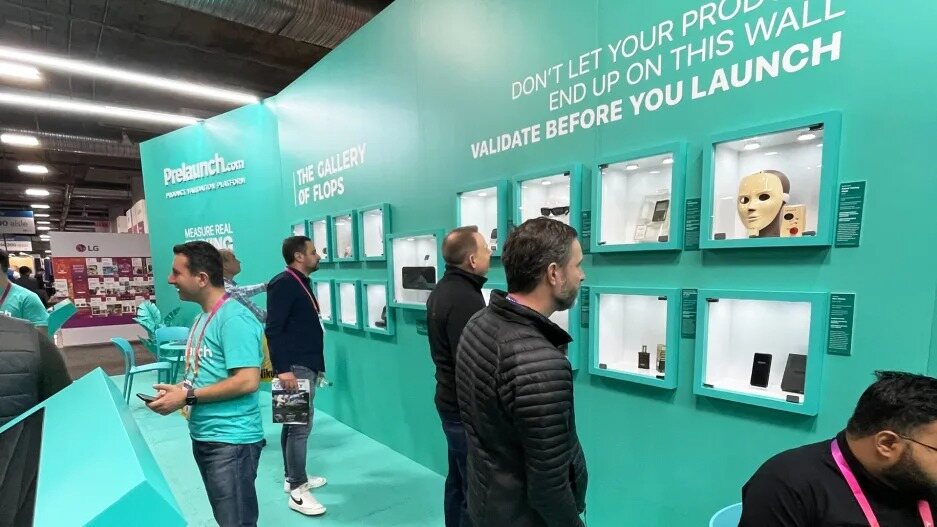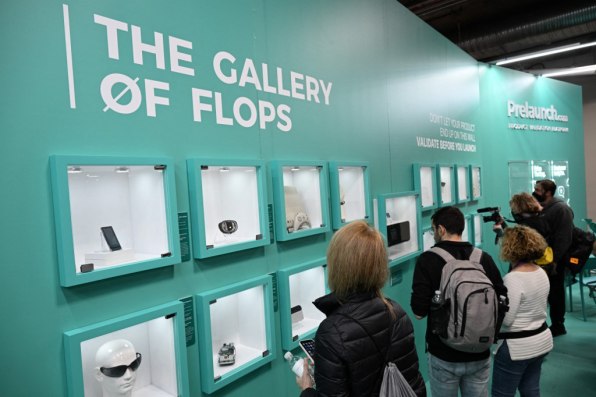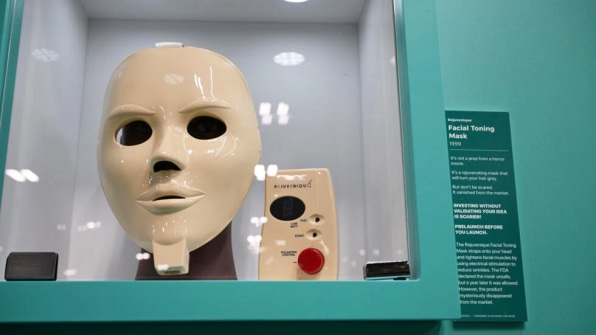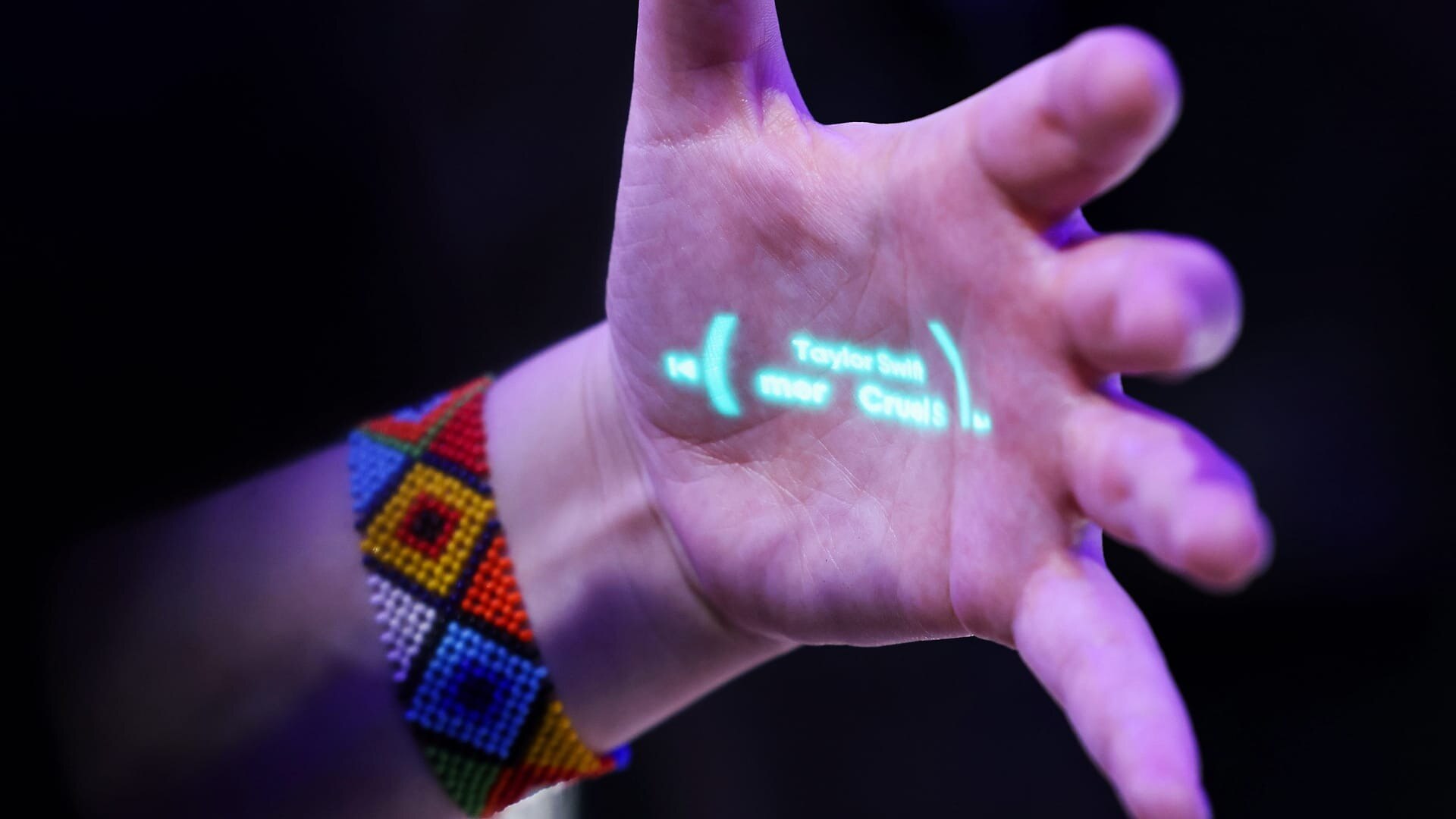- | 8:00 am
Lessons from 8 of the biggest tech product failures of all time
They can’t all be winners. This year, CES toasted some of tech’s epic fails in the Gallery of Flops.

There’s no denying that the Consumer Electronics Show has produced a number of truly revolutionary products. But for every success there are dozens—possibly hundreds—of gadgets, apps, doodads, and whatchamacallits that are bound to never be seen again.
It’s not just startups that fall short. Even some of the biggest names in technology have had some very notable whiffs. And this year, some of the biggest tech misses of the past 50 years were on display in a Gallery of Flops presented by Prelaunch.com, a platform for launching products.
Ranging from music players and gaming headsets to beauty devices, the gallery included some familiar products from big brands that have since become the tech equivalent of cult classics. There were also a few head-scratchers. Here’s a look at some of the biggest tech product fails in history.

AMAZON FIRE PHONE
In 2014, Amazon launched a 3D-enabled smartphone, looking to continue the success of its Fire tablets. It had unique features designed for the Amazon faithful, such as X-Ray (software technology that identifies actors, songs, and other things on screen, as well as trivia and Easter eggs in content) and a dedicated customer service tool. As it turns out, though, those loyal Amazon customers were also loyal to Apple and Samsung—and had no interest in Amazon’s take on the modern smartphone.
TWITTERPEEK
Long before Elon Musk was a factor at the social media platform, Twitter decided to try something oddly different. It teamed with mobile tech company Peek in 2009 to create a pager-like device that let users send and receive tweets. Priced at $100, it also carried a charge of $8 per month. Consumers quickly decided that they would prefer to use their phones than pay to tweet.
IPOD HIFI
Apple’s first take on an in-home stereo system lasted just 18 months. It had tremendous sound quality and was praised at its rollout, but it wasn’t an especially portable device. And as high-quality portable speakers at affordable prices began to hit the market (and competitors like Sonos grew), Apple threw in the towel.
SONY GOOGLE TV REMOTE
The plan was a good one: modernize the living room with a consumer-friendly device. The execution? Not so much. Whether because of poor design or disagreements between the two tech giants, this 88-button remote was much too complicated for most users, who couldn’t even figure out how to change the channel.
MICROSOFT ZUNE
Apple’s iPod had been on the market for five years by the time Microsoft got around to releasing its own digital music player. And the initial entry in the market was a clunky device that lacked any of the style consumers had come to expect. The Zune’s catalog didn’t measure up to what was offered in iTunes, and it was a bit ahead of its time, offering a music subscription service rather than focusing on people buying singles and album downloads.
NIKE MAGNETO
Nike knew that its athletic-focused customers wore sunglasses, so it made sense to introduce a Nike-branded line. Aware that one of the chief complaints of athletes was how glasses slip when the wearer gets sweaty, the company took an unusual approach—asking customers to glue magnets to their temples to ensure the glasses would stay put. Shockingly, people were not willing to do that.

REJUVENIQUE FACE MASK
Arguably the oddest product in the Gallery of Flops, this beauty industry monstrosity aimed to restore youthful looks with electrical stimulation. As if the very idea weren’t scary enough, the actual device—designed to be strapped to a user’s head—resembled something out of a horror movie (a look that seems to be making a comeback). It was backed by Dynasty star Linda Evans, but the Food and Drug Administration declared it unsafe and it eventually disappeared from store shelves.
NINTENDO VIRTUAL BOY
Nintendo’s 3D gaming headset was a forerunner of sorts for the Meta Quest and other VR headsets. But it made just about every mistake imaginable. It was priced well beyond what most Nintendo fans could afford. Its 3D effects were . . . not impressive. And wearing it caused neck, back, and eye pain for some users. After less than a year, the company decided it had made a mistake.
The one thing Prelaunch may have overlooked with its Gallery of Flops is the nostalgia value of bombs like these. In some cases, what the companies lost in investment, they may have made up for in pop culture notoriety. Years after they were pulled from the market, products like the Zune and the Virtual Boy are still hard to forget. Even though they were commercial flops, they definitely left a lasting impression.






































